Joyce Miyake
Follow
Artist Statement
As a Japanese-American, television only provided a template for success using the lexicons from the hegemonic agenda of capitalistic ideals. Since childhood to adulthood I became increasingly aware of the discourse of media’s relentless power, clutching on to our subconscious - creating superficial hopes and dreams. Television became a tool to consider consumers as its primary audience and evolved into an “information machine”. It became a vital source of understanding a commercialized, whitewashed social construct. I learned that because I was Asian I was meant to be good at math, obedient, exotic, and be the first to die in a horror movie. What entertainment failed to realize, was that I was none of these and if I had my reckoning, I would make producers bow their heads in shame. And it is not just me who has been squandered by this agenda, it has been bestowed upon the audience, musicians, actors, and models alike. This is a form of authority that I confront and question in my “Talk Back: A Response to Influence” series. My works reassess influence of popular media by speculating how the world of entertainment impacts identity, personal preference, social and economic status, behavioral and psychological development, and racial hierarchies.
Considering the media and advertisement as something that is projected at us, how can we respond to something that isn't listening?
As media is traditionally projected at its audience there is a limitation to our response. Media is fragmentary and centralist in order to capitalize on a frame by frame basis. My video works subvert found footage and use appropriation through editing processes to shed light on the patterns observed in television, media, and advertising. With each video having its own overarching theme, karaoke sessions give participants a chance to vocalize lyrics of selected popular songs to my video works. The found footage is contrasted with the songs for satirical purposes - mocking and questioning pop culture. Video distortion, which can only be activated by voice, fills the vacant space between the viewers and media and advocates dialogue between the two. At times lyrics have altered meanings, forcing participants and viewers to have new conversations about music and media.
How can we reassess influence knowing what we know now?
Installations including tufted, woven, and sown works use soft materials to understand the consequences of hard lessons relating to adversity, mental health, relationships, and sexuality. My wearables are fictional gang jackets which belong to the “Loud Speakers” who wear their jackets as a form of body adornment and awareness of how popular media effects us. Gang jackets are reminiscent of the 90’s, punk, and Japanese gangs (Yakuza, Bōsōzoku, and Sukeban) The backs of each jacket don the “outer shell” of former idols - idols whose identities have been construed to appease the capitalist agenda despite the drastic consequences they faced. While my choice in imagery referencing pop icons, products, or advertisements, is packed with information it is expressed through forms of craft which require constant and careful attention.
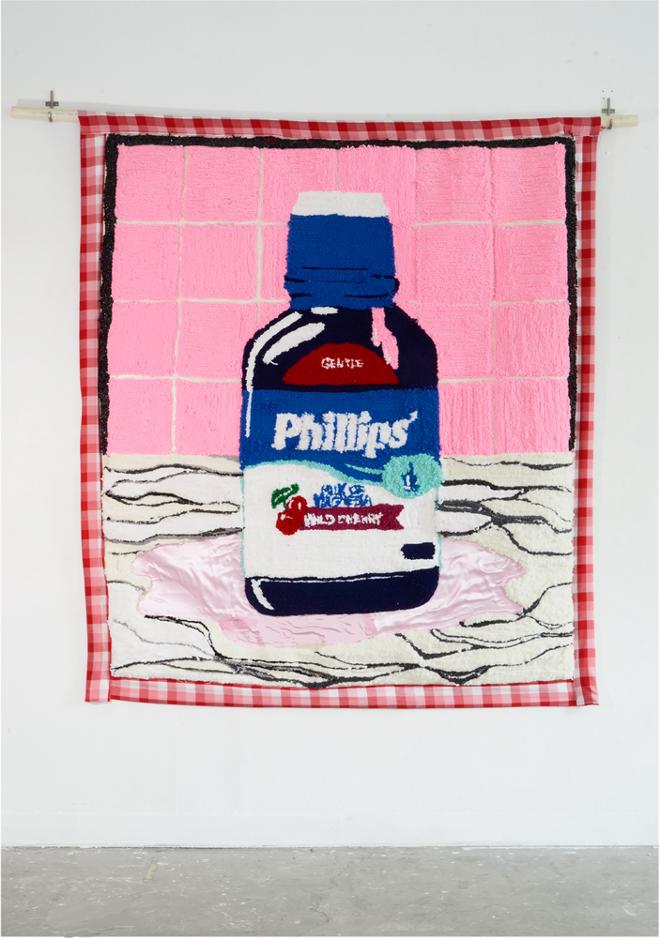 Click to view Large scale rug with tufted cherry flavored milk of magnesia sitting on marble countertop and pink tile background. Full-Screen
Click to view Large scale rug with tufted cherry flavored milk of magnesia sitting on marble countertop and pink tile background. Full-Screen
She’s My Cherry Pie // Yarn, cotton, polyester, VHS tape, PVC pipe, Elmer’s glue // 5 x 6 feet
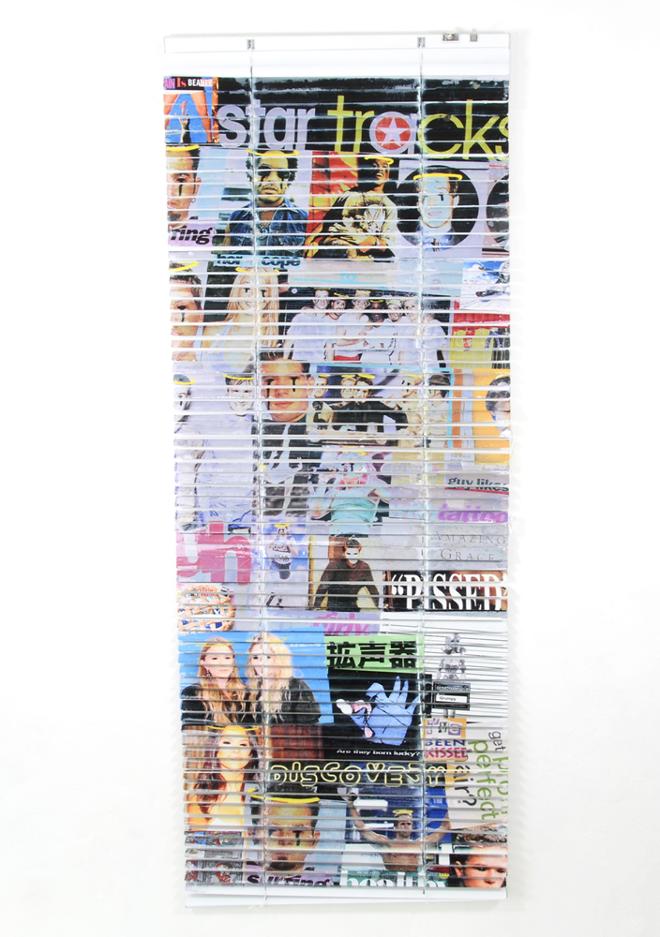 Click to view Photo collage of celebrities heat pressed onto aluminum blinds Full-Screen
Click to view Photo collage of celebrities heat pressed onto aluminum blinds Full-Screen
Blinded by the Light // Aluminum blinds, Poly-T // 24 x 63 inches
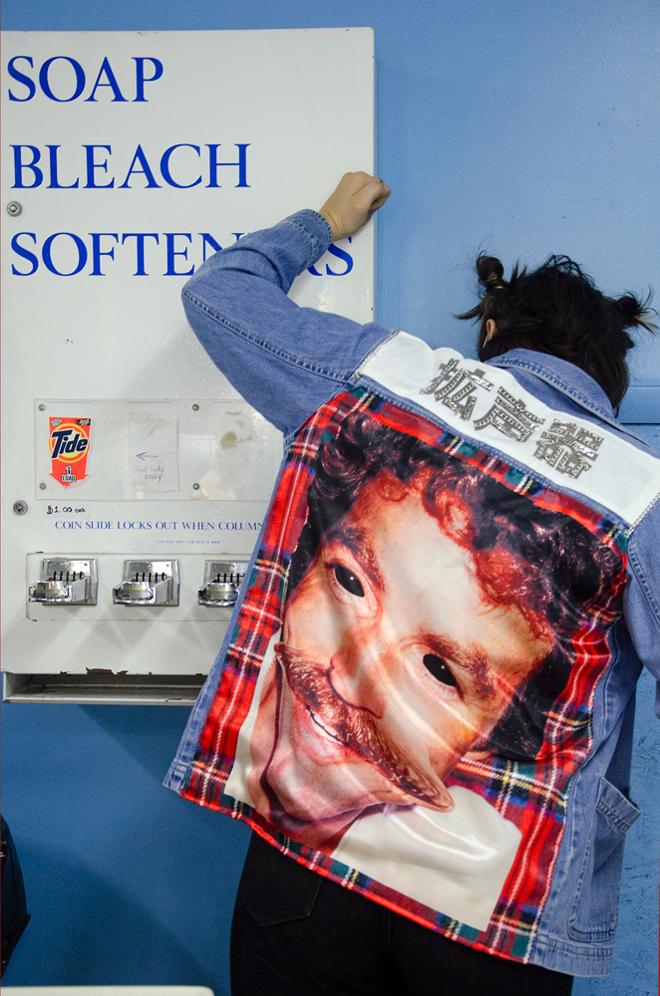 Click to view Denim jacket with heat pressed patch, chains, and cotton sown together Full-Screen
Click to view Denim jacket with heat pressed patch, chains, and cotton sown together Full-Screen
Cabin Fever with Tom Selleck (Member No. 3) // Denim, polyester, cotton, chain // 22 x 29 inches
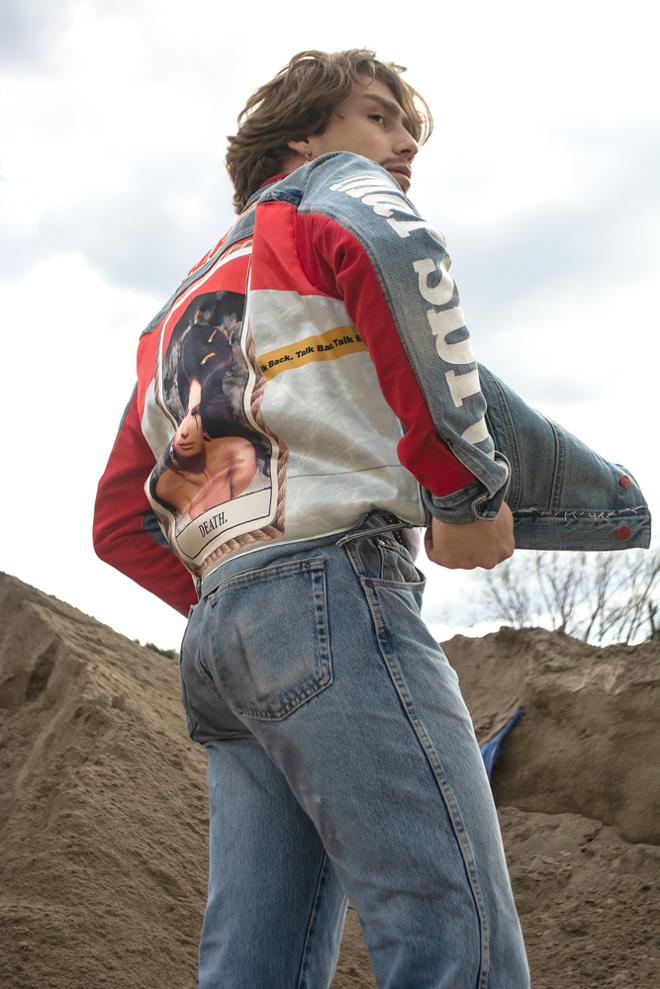 Click to view Denim jacket with heat pressed patch, painted text and chain painted with acrylic Full-Screen
Click to view Denim jacket with heat pressed patch, painted text and chain painted with acrylic Full-Screen
Lana Del Ray’s Dilemma (Member No. 10) // Denim, polyester, cotton, acrylic
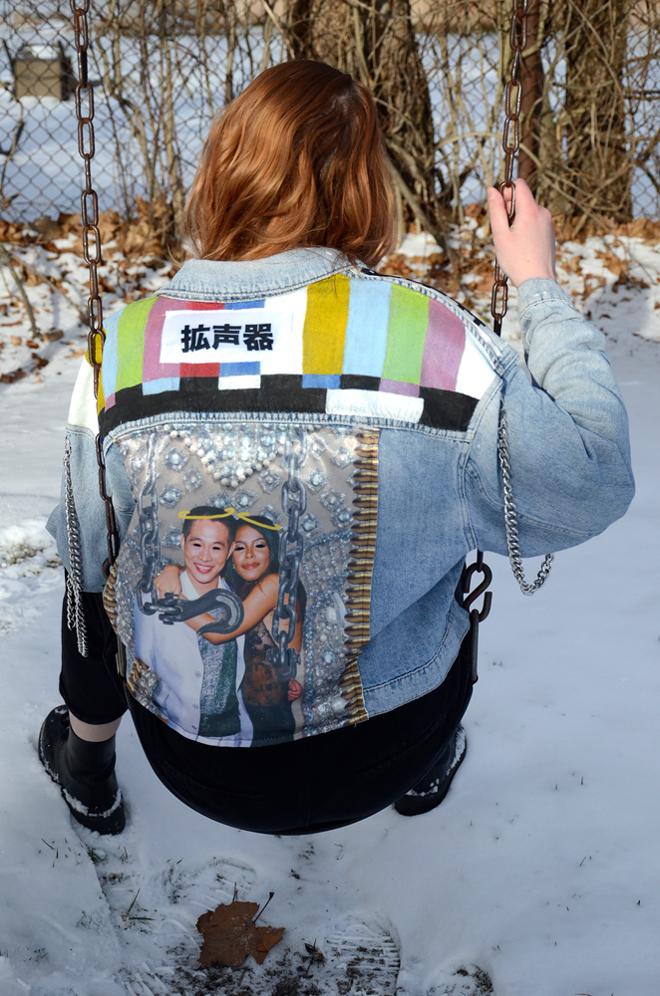 Click to view Denim jacket with heat pressed patch, painted TV color bars, and metal chains Full-Screen
Click to view Denim jacket with heat pressed patch, painted TV color bars, and metal chains Full-Screen
Last Dying Wish (Member No. 8) // Denim, polyester, acrylic, chains // 24 x 23 inches
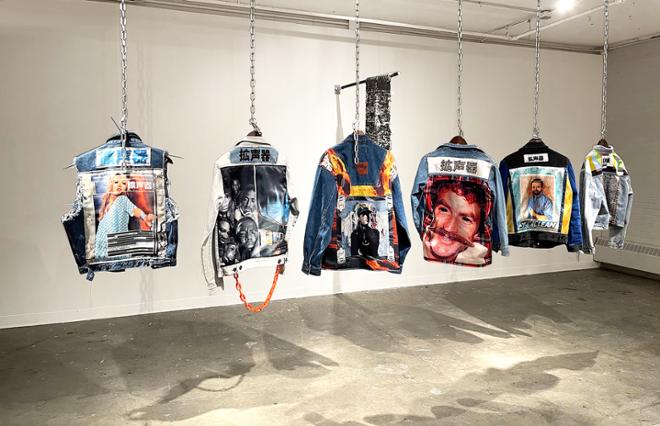 Click to view Six of the gang jacket collection hung in a row from ceiling with chain. Full-Screen
Click to view Six of the gang jacket collection hung in a row from ceiling with chain. Full-Screen
Loud Speaker’s Rendezvous (Member No. 6, 5, 7, 3, 12, 8) // Denim, polyester, acrylic, chains
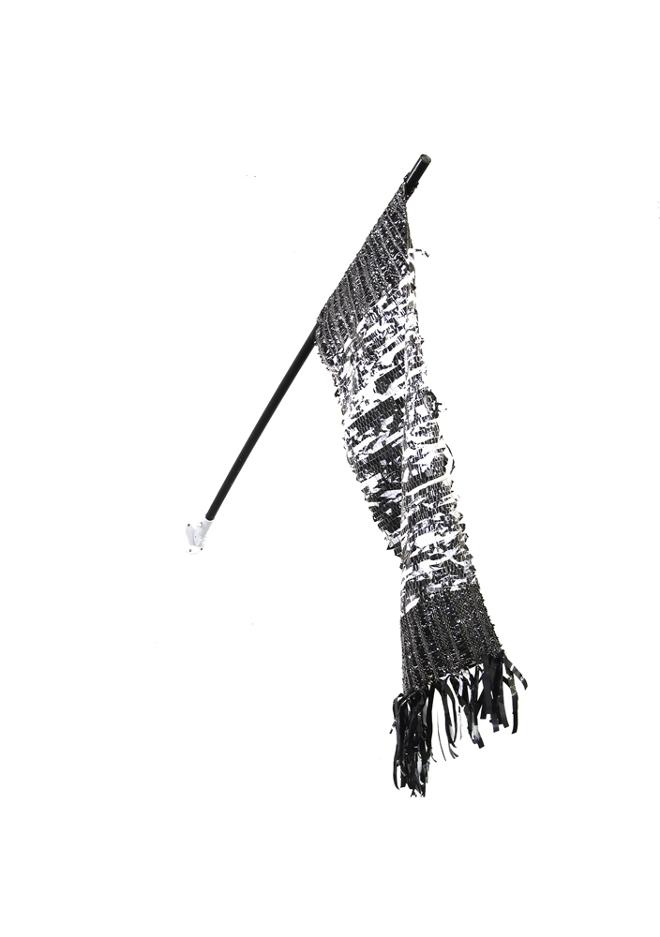 Click to view VHS tape woven into a flag held with a flag holder Full-Screen
Click to view VHS tape woven into a flag held with a flag holder Full-Screen
Dirty Dancing Rewind // VHS tape, acrylic // 25 x 55 inches
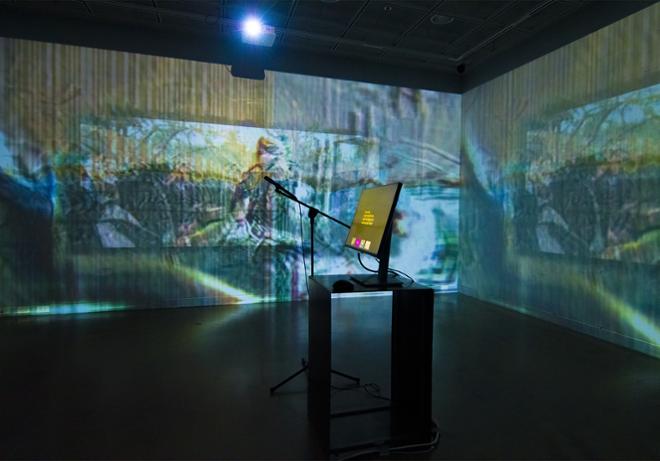 Click to view 3 Channel video installation with karaoke from small computer monitor in center of room. Voice activates datamoshing effect and in result distorts my video works. Full-Screen
Click to view 3 Channel video installation with karaoke from small computer monitor in center of room. Voice activates datamoshing effect and in result distorts my video works. Full-Screen
Image Karaoke // Interactive video installation
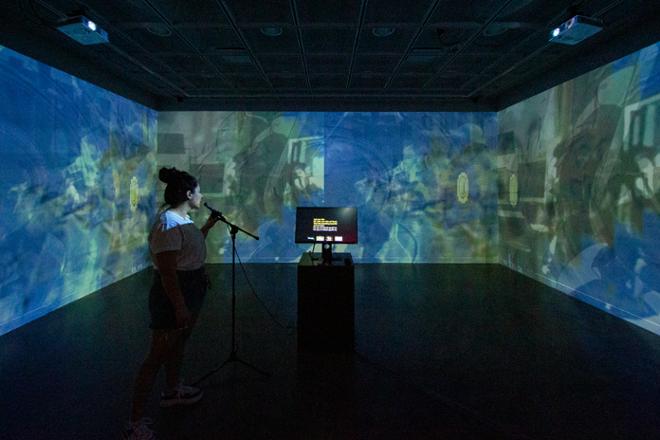 Click to view Image of performer interacting with Image Karaoke a fully interactive audio/visual installation. Full-Screen
Click to view Image of performer interacting with Image Karaoke a fully interactive audio/visual installation. Full-Screen
Image Karaoke Performance // Interactive video installation
